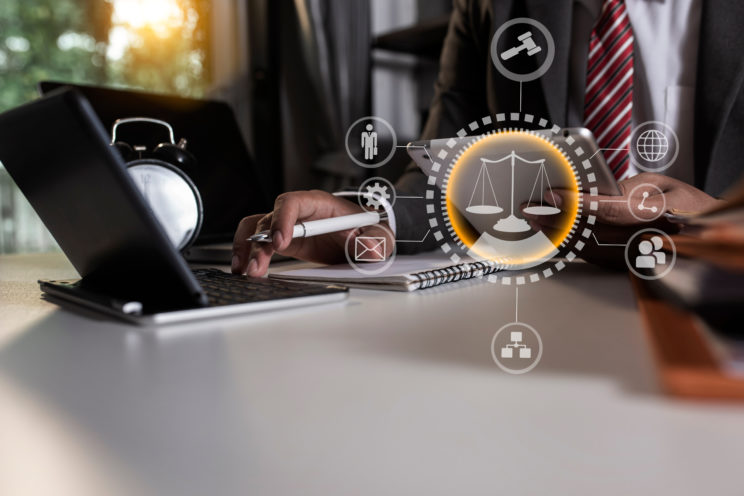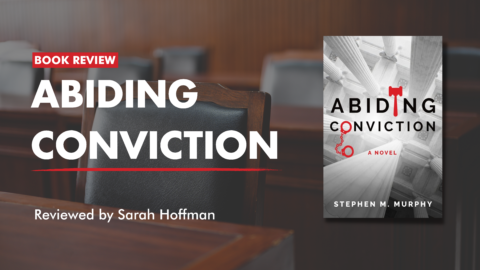San Francisco Superior Court Judge Anne-Christine Massullo had pre-qualified over two hundred prospective jurors in anticipation of the court’s first in-person civil jury trial since the coronavirus pandemic.
She used a tape measure to make sure all twelve jurors and everyone else who had to be in the courtroom would be spaced at least six feet apart. To maintain social distancing, the ten alternate jurors and others who could not fit in the courtroom would watch the proceedings on video from a nearby courtroom. Everyone would wear masks of their choosing and receive individual alcohol wipes to use.
She had to think through nearly every step of how the three-month class action trial would play out. Jurors would receive bagged lunches. Members of the public would be able to dial in and listen remotely. Schedules were changed to ensure that the clerks would get required breaks.
When the case settled in October, shortly before the trial was to begin, Massullo was still mulling over how she would handle the many questions that might arise as the trial unfolded. What if some got sick, either with COVID-19 or the flu? How would she conduct socially distanced sidebars?
“In walking through this there were all these little things I took for granted,” she said.
In light of the complexities, some litigants are opting for a virtual bench trial rather than a jury trial. Massullo wonders if more litigants would be more willing to exercise that option if their case could be decided by a panel of three judges instead of one.
“I’m hoping out of this cloud of COVID we get some bright ideas and make sure our system works efficiently and effectively for everyone,” she said.
Virtual proceedings have become routine since San Francisco’s March 16 shelter-in-place orders went into effect. Even as businesses have slowly reopened, many lawyers have continued to work remotely, handling client meetings, hearings, and depositions via Zoom and various video/teleconference platforms.
But the transition has presented its own set of challenges.
Frank Busch, a partner at Wagstaffe, von Loewenfeldt, Busch & Radwick, was recently preparing for his first virtual bench trial in a dispute between family members involved in a closely held corporation. The oldest family member and some of the lawyers involved are in groups that are high-risk for COVID-19 complications, so everyone agreed to stick with virtual proceedings.
“Ordinarily, the gold standard for credibility is to have the judge looking over the bench at the witness, watching them tell their story,” he said.
But the question remains whether Zoom is better than in-person testimony with safety precautions such as masks and plexiglass in place. Not to mention the technical issues that might interfere with someone’s ability to give clear testimony. Lawyers have to now assess how well their witnesses will come across in a digital format.
“It’s just a whole new ballgame when you’re thinking about giving binding trial testimony from a place you cannot see,” he said. “ When it comes to a trial the stakes rapidly multiply.”
On the plus side, virtual proceedings offer more scheduling flexibility since witnesses don’t have to travel and spend hours in court waiting.
Sharon O. Rossi, a shareholder at Rogers Joseph O’Donnell, described her recent evidentiary hearing in a federal wage and hour class action lawsuit.
The plaintiff was in the plaintiff’s lawyer’s office. She and her co-counsel for the defense were in different rooms in the same office. They were joined on Zoom by three witnesses, a court reporter, the judge, the judge’s law clerk, and the court clerk.
Rossi recommends that, to the extent possible, assemble everyone on your side at the same location but in different rooms for easier communication in the event of technical problems.
While it would be ideal for co-counsel to be in the same room—to easily communicate with one another—that creates a risk of feedback noise. Because Rossi had to share her screen with the court to publish exhibits, she and her co-counsel were relegated to communicating with one another by text message. (During witness testimony, her colleague tried to text her to make an objection, but she didn’t see the text until after the witness had answered the objectionable question).
Another challenge was handling exhibits over Zoom. When sharing an exhibit, the entire document did not fit on the screen and the attorney presenting the exhibit was the only one who could control the scrolling. Rossi recommends having a paralegal or another attorney handling exhibits so the examining attorney can focus on questioning the witness.
The day before the hearing, she had to show her witness how to find the camera and turn it on. In hindsight, she should have instructed the witness to look directly at the camera when speaking rather than looking around the room.
One of the biggest adjustments is the lack of ability to discern visual cues.
“There’s so much communication that we rely on when we’re face to face that cannot happen when you’re socially distanced through Zoom,” she said. “It just makes everything more one dimensional and stunted.”
But that also takes some of the emotional charge out of the proceedings, and the technology gets easier to use the more often you do it, she said. The key, as with many things in life, is preparation.
“You want to have a lot of contingency and backup plans,” Rossi said.
David A. Lowe of Rudy, Exelrod, Zieff & Lowe experienced his first test-run with a virtual trial in June. Judge Edward Chen of the U.S. District Court for the Northern District scheduled a practice run so everyone could get familiar with the court’s videoconferencing platform before the bench trial would begin.
Lowe’s trial team had to make sure that electronic trial exhibits could be viewed clearly and were successfully uploaded to the court’s document-sharing platform.
The team held Zoom practice sessions to make sure that they could smoothly move from live witness testimony to document exhibits to demonstrative exhibits to video clips. They discovered that the iPad version of Zoom lacks the screen-sharing functionality of the desktop version.
Lowe invested in a standing desk, external camera, and microphone and adjusted the lighting and background to make sure he looked as professional as if he were standing in the courtroom.
Although the case didn’t move forward as scheduled, the experience was valuable. Since then, he has conducted client meetings, witness preparations, depositions, mediations, and a lengthy arbitration hearing entirely using videoconference technology and without ever meeting the client, witness, or opposing attorneys in person. He has also received, reviewed, managed, and produced tens of thousands of pages of discovery and client documents without ever physically touching a piece of paper.
“Our ability to effectively represent our clients depends like never before on our access to technology and our skill in using it,” he said. “If we cannot use technology to litigate remotely, we simply cannot move our cases forward.”
With no quick end in sight to the pandemic, it’s clear that lawyers will continue to adjust to the new virtual reality. Much of this education will likely come through trial and error.
“When we’re at this early stage, no one person will be able to identify all the potential issues and address them in advance,” Busch said.
About the Author:
Laura Ernde is a San Francisco-based writer and communications consultant. She has covered legal affairs for more than a decade, as a journalist and former editor of the California Bar Journal.




